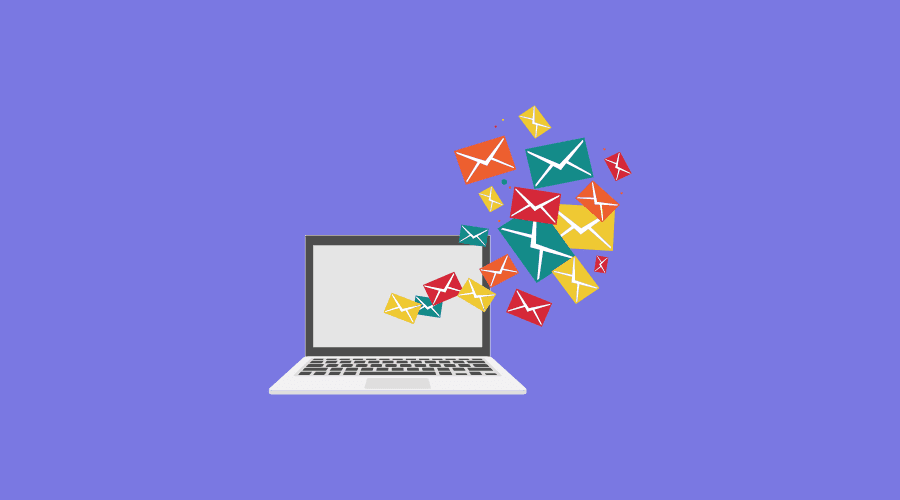
How Google’s New SPAM Rules Impact Email Marketing
Posted Jan 10, 2024 | Updated 1 year ago
Last fall, Google announced it would be implementing new protections for “a safer, less spammy inbox.” These are primarily aimed at bulk senders, or companies that send more than 5,000 messages to Gmail accounts in a given day, but there are also some standards that apply to all mass email senders.
Similarly, Yahoo—another big player in the email marketing world—has also made changes to follow suit.
For companies and nonprofit organizations that rely on email marketing as a part of their communications strategy—which is a majority of small- and medium-sized businesses—these new authentication and spam rules may have an impact.
Before we dive in: Don’t get too freaked out. Most SMBs in the Colorado Springs area are already using thoughtful and conservative approaches to their email campaigns, which means they’re safely within guidelines. However, it’s still important to have a clear understanding of the changes made by Google and Yahoo, so you can be sure you remain in compliance for upcoming email campaigns in 2024.
What are Google and Yahoo’s New Practices and Standards?
In general, email rules, regulations, and practices are established to help protect recipients from receiving unwanted mail, which could be everything from annoying spam to more malignant content that poses a safety risk.
Here is a rundown of some of Google’s new rules for businesses and organizations that fall in the bulk sender category:
1. Bulk Senders Must Authenticate Emails
Google was already requiring bulk email senders to incorporate some type of authentication to mitigate the number of malicious emails hiding among validated ones. However, this practice of strongly authenticating emails is now mandatory, and Google is asking bulk senders to follow best practices in this area and to implement three well-known authentication mechanisms: Sender Policy Framework (SPF); DomainKeys Identified Mail (DKIM); and Domain-based Message Authentication, Reporting and Conformance (DMARC).
2. Easy Un-subscription is a Necessity
Google also doesn’t want recipients to have to jump through hoops to stop receiving emails from businesses with whom they don’t want to stay in contact. To aid in that goal, bulk senders must now make it possible for recipients to unsubscribe from their email marketing campaigns with one click. Additionally, businesses have two days to process these requests to unsubscribe and remove the recipient from their email marketing lists.
3. Businesses Must Stay Under Reported Spam Threshold
In another move to de-spam users’ email inboxes, Google has set a threshold in regards to a sender’s reported spam rate, or the amount of times recipients mark one of the sender’s outgoing emails as spam. All businesses and organizations—not just those that send at least 5,000 emails to Gmail accounts per day—are asked to keep the rate below 0.1 percent (which equals an average of one complaint per 1,000 emails) and to not let it reach above 0.3 percent. The spam rate is calculated daily.
Google is requiring bulk senders to be implementing these new rules by February, at which time enforcement will begin. The company has also updated rules that apply to all senders—not merely those that fall in the bulk sender category. These include requirements like adding DMARC headers to outgoing mail; setting up SPF or DKIM email authentication for a domain; and formatting messages according to the Internet Message Format standards.
Yahoo Spam Email and Authentication Standards
Along with Google’s rule updates, there is other movement within the email community that is aimed at giving users a better, cleaner, and safer experience, with Yahoo updating its email standards as well.
According to Yahoo, enforcement will start to take effect in February, and it will be rolled out gradually as they “monitor compliance through the first half of the year.” Many of their updates mirror Google’s, with all senders being required to authenticate emails; keep spam rates below 0.3 percent; and implement SPK or DKIM at a minimum.
Bulk senders must also make it easy for recipients to unsubscribe with one click, which includes implementing a list-unsubscribe header for marketing and subscribed messages. They must also incorporate a highly visible unsubscribe link in the body of each email and then process unsubscribe requests within two days.
Some other requirements include having a valid forward and reverse DNS record for sending IPs; implementing both DKIM and SPF; including a “rua” tag; and publishing a valid DMARC policy.
Finessing Your Professional Email Marketing Strategy
At first glance, Yahoo and Google’s standards and requirements can seem a bit intimidating.
First, keep in mind that these rules and regulations are designed with big companies in mind, including those that send hundreds of thousands of marketing emails every day. Not many SMBs and nonprofit organizations in the Colorado Springs area are sending the daily quantity of emails to Gmail or Yahoo accounts to fall into the bulk sender category.
Plus, if you’re already authenticating emails, tailoring your content to ensure it has value to recipients, and making it simple for people to unsubscribe in a single click, there’s not too much to worry about.
That being said, you never want to jeopardize your important email marketing campaigns by not being in compliance. And there are certain things over which you only have marginal control. For example, you can’t control whether recipients mark your email as spam, but you can ensure you’re sending high-quality emails, crafting clear subject lines, and sending at optimal times so your email doesn’t get accidentally clumped with those that actually are spam.
Work with a Mindful Digital Marketing Agency
Those are the types of tasks and activities that our team at Third Angle can help you understand and assist with. We’ll work alongside you to review your email marketing strategy, double check you are in compliance with the standards and rules of the big players (which are frequently changing), and even help you strategically choose when direct mail is a better choice than email for connecting with your customers or supporters. If you have any questions or concerns about where you stand as a company or nonprofit, we’re here to help.

